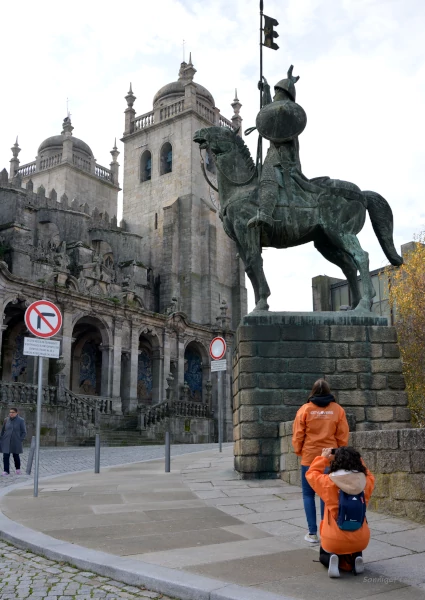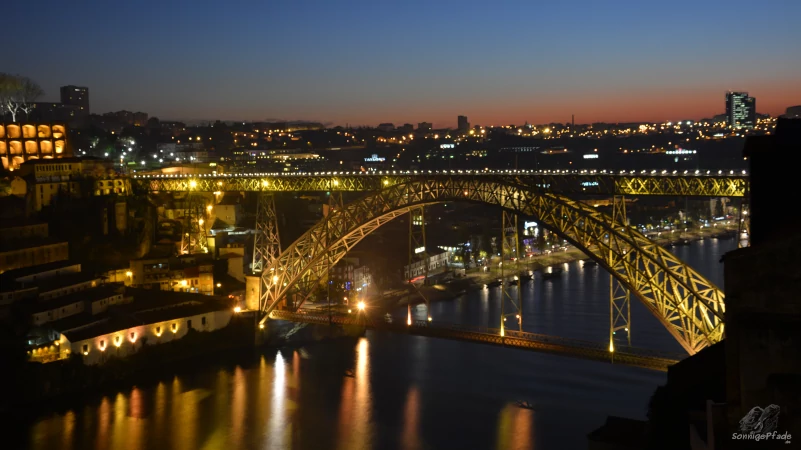
If you visit Portugal, you should also visit Porto. Portugal, Porto, Port wine… they are somehow connected. Even though Lisbon is the capital and most populous region of Portugal – Porto represents a bit of what urban centers in Portugal are all about.
Porto is the Portuguese word for „port.“ This certainly defines the city’s importance in the past, but currently there is little sign of the port or anything associated with it in the old town. You can’t even see the Atlantic Ocean! Only those who drive further west along the Douro river reach the „maritime zone“ near Porto.
Porto – characterized by the port, trade and „spiritual drinks„
Porto is located in Europe in the north of Portugal at the mouth of the Douro River into the Atlantic Ocean. For a long time the Douro was one of the lifelines for traffic, it is one of the longest rivers of the Iberian Peninsula. Among other things, the famous Port wine, also known as Port for short, was shipped across the river by „Rabelo“ from the Alto Douro region to the city and port. The trade with this wine was for a long time one of the most important sources of income for Porto.
Good to know – Porto is the city north of the Douro River. South of it is Vila Nova de Gaia, which is an independent municipality. The two cities are closely connected by several bridges, including a metro connection, so for visitors the two twins tend to go together. In the following, I will certainly only rarely point out that I am not talking about Porto, but about Vila Nova. Porto is called by the way above all by Spanish and English – speaking guests often also Oporto, with it the prefix O is drawn to the name.
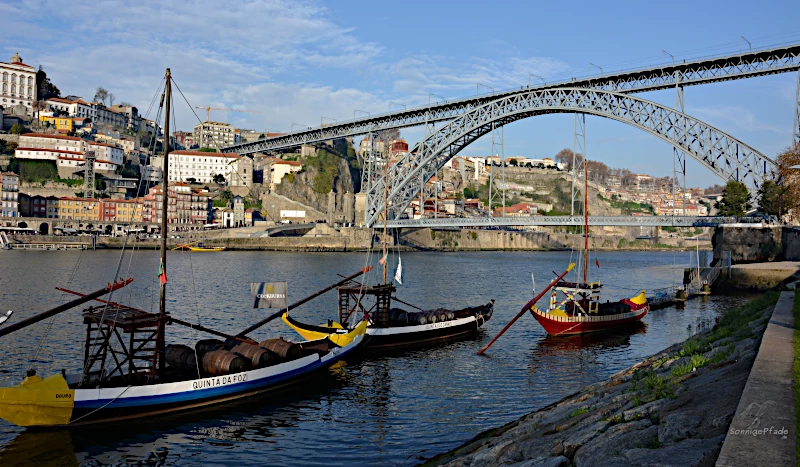
Porto has a population of about 240,000, and the metropolitan area has a population of about 1.75 million. This makes the region the second largest settlement area in Portugal after Lisbon. Although you don’t notice much of this in the old city, Porto is also the second most important industrial center in Portugal. This is mainly due to the nearby industrial port of Leixoes, through which a large part of the maritime trade is handled.
A tour through Porto’s old town
No sooner had I arrived and „checked in“ in Porto, I was already invited to the city tour with the „Citylovers„. Half an hour later it should go off, from the meeting point at the monument Pedro’s the IV. Has not so worked out, because besides me only one another interested person was waiting at the monument, but the prelude was done. Several „Citylovers“ with their orange T-shirts and windbreakers were on site and greeted us with warm enthusiasm, as it can only come from dedicated volunteers.
The „Citylovers“ in Porto are volunteer city guides, mostly young students or freelancers, who like to improve their foreign language skills and equally like to show strangers their hometown with attractions and personal favorites. There are various offers – the simple city tours of 2 – 3 hours are free (although a reasonable tip is expected at the end). Other more specialized tours, like food and wine tour, nightlife tours as well as city tours in an old VW Bulli, for example, cost something.
Porto Sao Bento train station
Our tour started at the Porto Sao Bento train station just „around the corner“. Here, especially the entrance hall is worth seeing: All walls are decorated with large azulejos – mosaic tiles, which depict historical scenes such as the Battle of Ceuta, station scenes or everyday life. About 20,000 of the azulejo tiles adorn the walls of Sao Bento Station, opened in 1916. For me it was also exciting that the railroad lines from this terminus disappear directly from the platform in a tunnel. So the station is right in front of a mountain. I have never seen that before.
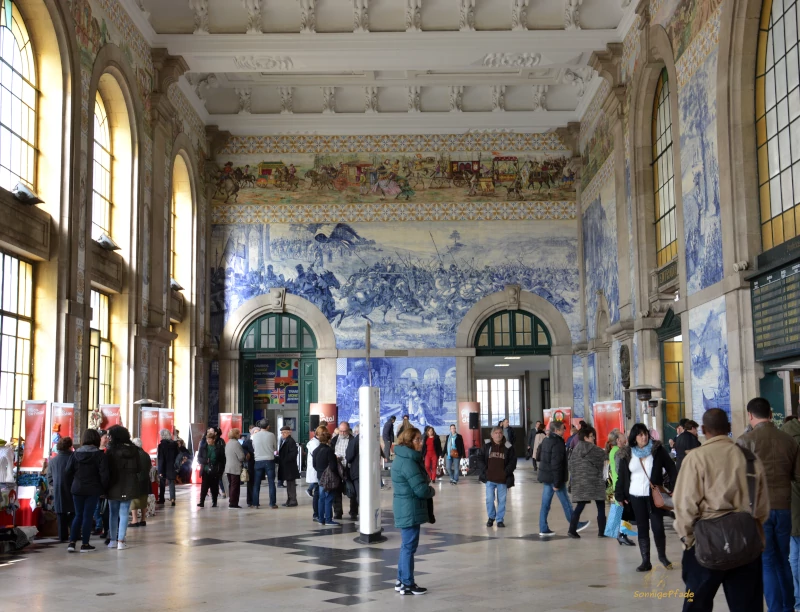
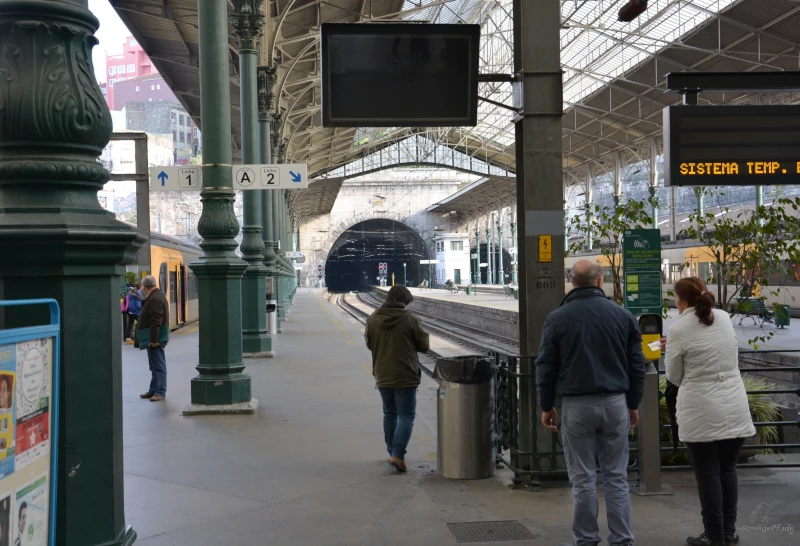
From the Sé do Porto Cathedral downhill to the Douro river
Just a few steps further uphill is the spiritual center of Porto, so to speak – the Sé do Porto Cathedral. Already in the 12th century there was a Romanesque fortified church on the top of the mountain. The cathedral was later built on the remains of this church, which underwent considerable reconstruction in the 17th and 18th centuries. The interior decoration is also quite simple, but especially a richly gilded altar forms a strong contrast. The Portuguese branch of the Pilgrimage of St. James to Santiago de Compostela also begins in front of the Sé do Porto Cathedral.
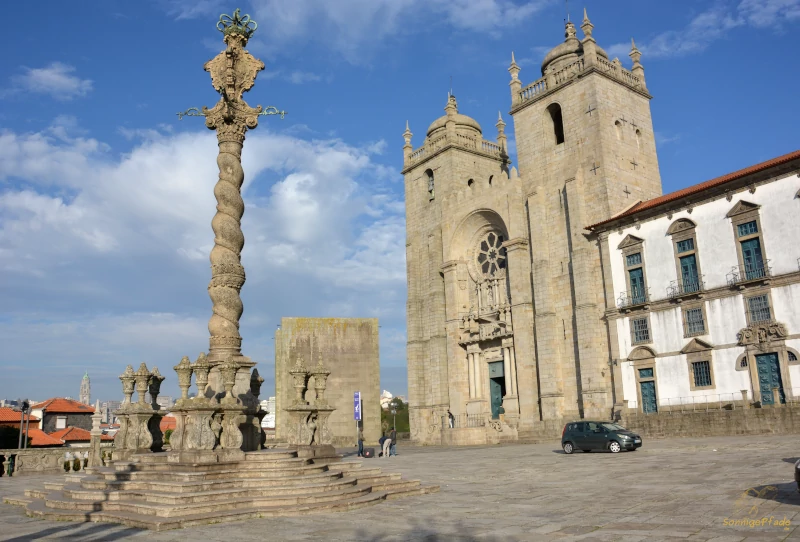
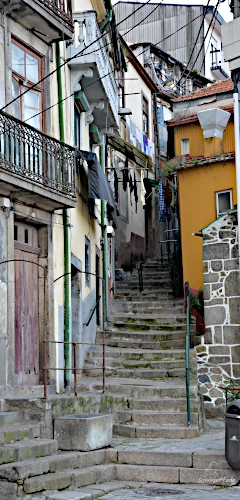
Porto is on the whole very mountainous. The city center with its commercial streets is mainly located at the top of higher levels, hilltops are often occupied by churches or other representative building ensembles. Narrow alleys between old dwellings lead down steep slopes into the Douro Valley. There you will find the Ribeira, the riverside settlement with the Cais de Ribeira. This is the riverside street or square where many restaurants await tourists.
On the river anchor the traditional barcos rabelos with wine barrels on board, for visitors tours are offered. By the way, the wine cellars with the stored port wine are mainly located on the southern side of the river in Vila Nova. Tours are offered there, which usually include tastings. From the Citylovers it was said that the port wine owes its special taste also to the transport of several days from the cultivation area in old oak barrels over the river.
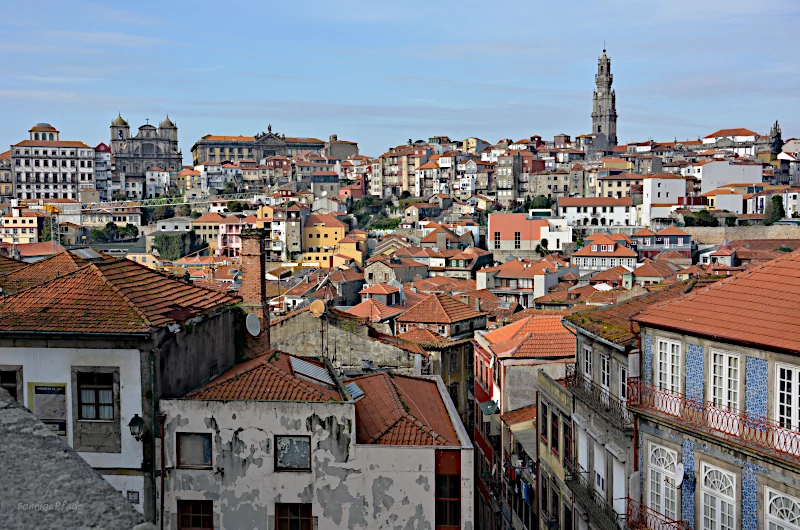
Bridges, mountain railroads, elevators – movement technology on all levels
Especially impressive are the bridges over the Rio Douro, which are often built „multi-level“. The most famous and formative for Porto is the iron bridge Ponte Dom Luis I, built by Teófilo Seyrig, a student of Gustave Eiffel. In the „basement“, a road/pedestrian level crosses the river.
Above it comes an imposing steel girder – arch up to the mountain level. Up there, on another „floor“, the bridge connects both the Porto Metro Line D and the elevated pedestrian districts. In doing so, the Metro emerges from a tunnel, passes the Douro on the bridge, and then stops at Vila Nova de Gaia. Near this stop is the top station of a modern cable car that takes pedestrians from the „upper city“ down to the riverbank level. So, even if Porto and Vila Nova have a somewhat „strenuous“ terrain profile – technical aids to overcome the differences in altitude and river barriers do exist.
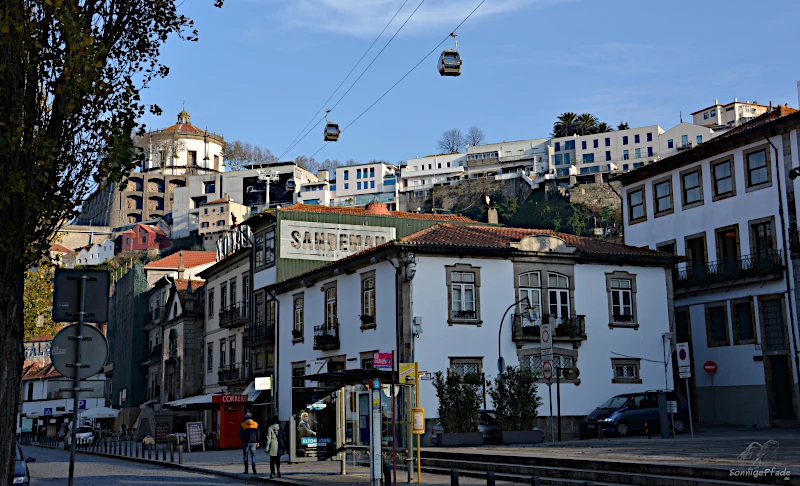
To continue on the northern (Porto) side: Directly at the approach of the lower bridge – floor of the Ponte Dom Luis I a funicular ends in the valley station and over the Cais de Ribeira an old elevator brings tired pedestrians to the upper parts of the city.
And just a river bend away, there is another „copy“ of the Luis I bridge – also a steel girder bridge Ponte de Donna Maria Pia (but without a „basement level“). This was a railroad bridge for a long time, but has been replaced by a modern bridge in the meantime. The „Donna Maria Pia“ – bridge was constructed by Seyrig together with Gustave Eiffel. For traffic engineering – friends Porto is quite an experience! And at the same time these technical installations are very well integrated into the views, so that even aesthetes can enjoy the urban beauty of Porto. At least in the valley of the Douro river.
Obviously, the Portuguese are well aware of the values of historical development. For it is not only in Lisbon that an old, squeaky streetcar runs. In Porto, too, 3 lines have been preserved on which cars from the 1940s run. These mainly please tourists – the everyday city traffic is handled since the 80s mainly with modern city buses. Those who are more interested in the historic streetcars of Porto can visit the Museu do Carro Eléctrico, i.e. the Tram Museum.


Best views from the Torre dos Clérigos
The highest point in the old town of Porto is the Torre dos Clérigos, which was completed in 1763. It is 76m high, making it the highest church tower in Portugal. Who does not fear the ascent over the nearly 300 steps, can climb against a small obulus on the view – level and is rewarded with a far panorama over Porto, the valley of the Douro river and up to the Atlantic.
A bookstore with entrance fee – Livraria Lello
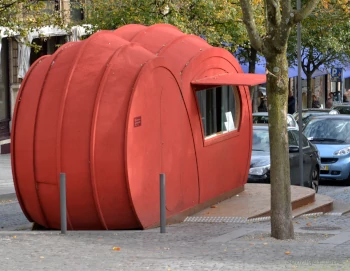
Before I came to Porto, I didn’t know of any bookstore that required an entrance fee. But there is! For the Livraria Lello, a few meters away, there is a small cashier’s booth on the street (Rua das Carmelitas 144) and the card is checked at the entrance. Understandably so, because if masses crowd into the store without buying anything, the cleaning costs rise immeasurably and also the wear and tear must eventually lead to restoration.
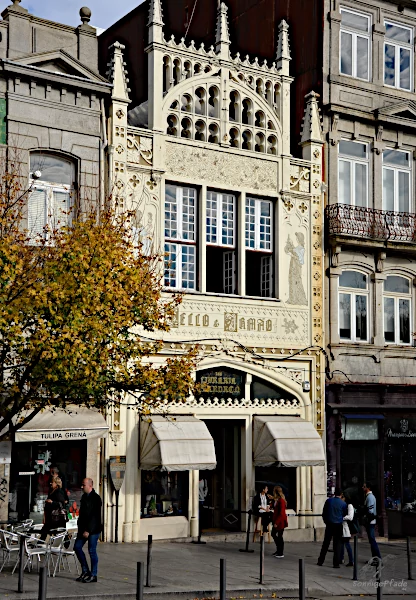
The Livraria Lello bookstore is an attraction and a real jewel among the architectural highlights of Porto. The attractive neo-Gothic facade is still quite modest. What’s really admirable is the Art Nouveau interior – long rows of wooden shelves on the walls, their beams ending in carved ceiling supports. In the center of the store space a winding staircase branching out several times to the first floor. The ceiling is partially decorated with carved rosettes, lit above the stairs by a leaded skylight. The many dark wooden elements and the subdued lighting surround the visitor with a warm atmosphere that invites him to linger and browse.
Joanne K. Rowling, the author of the Harry Potter books, is said to have been a frequent guest at Livraria Lello in her younger years. She worked as a teacher at an English school in Porto in the early 1990s. Allegedly, the atmosphere and design of the Livraria Lello provided her with inspiration for the description of the wizarding stores in the Angle alley. Harry Potter editions in various languages are one of the best sellers at Livraria Lello. By the way, visitors can charge the entrance fee to the bookstore if they buy something there. However, the foreign language offer of the Livraria Lello is limited to Harry Potter volumes, mainly illustrated books and city guides of Porto.
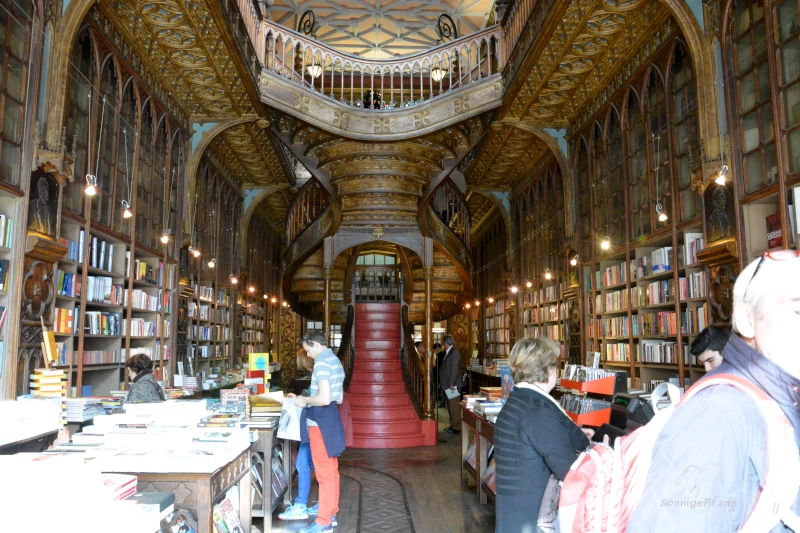
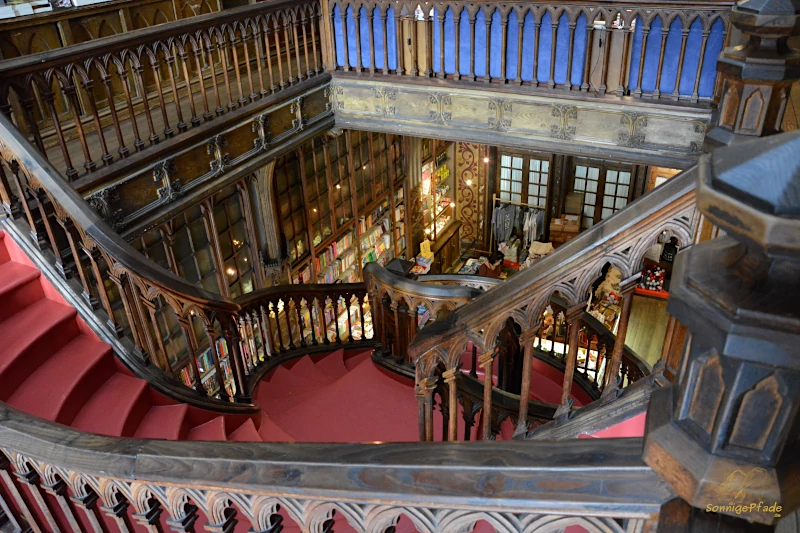
Wood, wool and leather – from schoolbags to bicycles
If I am now just with special stores of Porto, I must divulge immediately still another discovery: in the Rua da Conceicao, diagonally opposite the junction of the Rua de José Falcao there is a small store „Mercado 48“, in which different handmade utensils are offered predominantly from wood and leather – small and larger pencil cases, pretty knitted hats, wooden lamps with leather shade, little bags partly also felted up to the wooden bicycle!
The owner recommended me immediately a test round on his own wooden wheel, with which he drives daily to the store. And already I sat on this wooden vehicle and curved through the streets of Porto! What can I say – I was already surprised about how light the bike was. Technically, it is well equipped, with hub dynamo, LED light, wooden rack, leather handles, good Brooks leather saddle and thick Schwalbe Big Apple tires. Bottom bracket, brakes, handlebars, wheels are solid high-quality ingredients from the bicycle industry. The driving experience was excellent. Unfortunately, not quite cheap the part, in the „low four-digit range“. The seller tells me, there sits an elderly handyman just outside Porto, which saws out these bikes in manual labor and screws together. I was already enthusiastic. Such a wheel makes visually what her and the short ride promised quite a lot of fun for the road.
Well, who looks for a not everyday souvenir of Porto, which should visit the Mercado 48 – store. Just one look at the displays of the temptingly designed store is worth the trip.
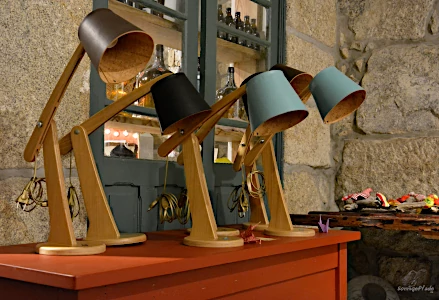
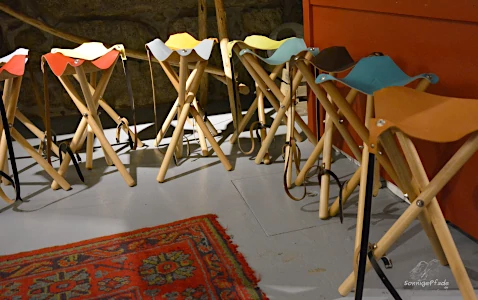
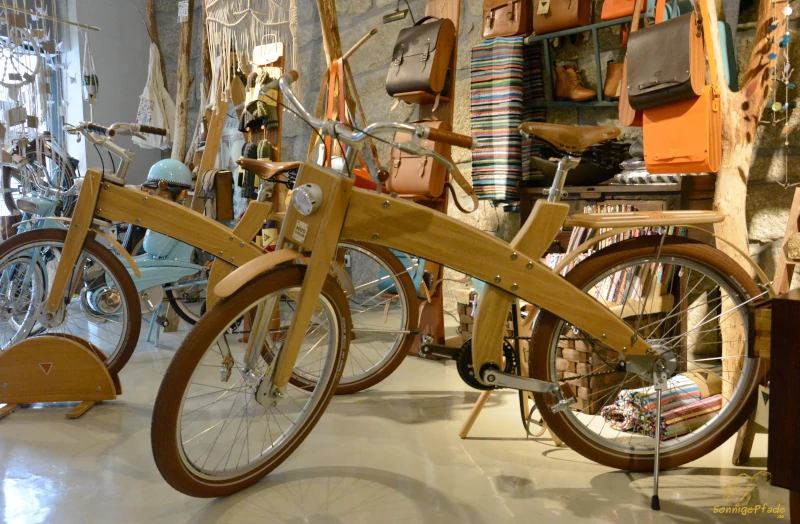
Feast like bohéme – in art nouveau style – Café Majestic
Of course Porto has a lot of gastronomic offers. I already mentioned the restaurants of the Ribera on the banks of the Douro. A special coffee house from the „good old days“ is the Café Majestic in the Rua Santa Catarina (No.112). Already the exterior is worth the short visit – the openwork stone facade gives a view of the wooden and glass doors and windows behind. The interior design in Art Nouveau style has remained unchanged for about one hundred years.
coworking spaces are not an invention of modern times! In the Café Majestic, which was still called Elite back then, the bohemians of the (nineteen hundred…) twenties met and discussed, mused, swaggered and gave free rein to their ideas. During the Salazi dictatorship in Portugal, the Café Majestic was somewhat unloved. Since the beginning of the eighties it experienced a come back under new owners. Allegedly, J.K.Rowling frequently stayed at the Café Majestic in the early 1990s and wrote the first chapters to Harry Potter in these rooms.
Churches in the Porto World Heritage Center
In addition to the aforementioned Dom Sé do Porto, there are of course other churches in the city worth mentioning. The Torre dos Clérigos is, after all, the tower of a church that seems almost inconspicuous in the shadow of the tower. It is the Igreja dos Clérigos, the „Church of the Clerics“. Like the tower and many other buildings in Porto, it was designed by the Italian Baroque architect Nicolau Nasoni.
The Igreja de Santo Ildefonso from the 18th century, near the theater São João, is worth seeing especially from the outside, because it was decorated with azulejo – mosaic tiles.

A particularly significant sight of Porto is the Igreja São Francisco, which was completed in 1425 as part of the Franciscan monastery. The architectural style is predominantly Gothic. In the 17th and 18th centuries, the interior of the church was remodeled in Baroque style. This gave the São Francisco church a wealth of gold-covered decorations and carvings of the Portuguese talha dourada period. If you love the rushing splendor of the baroque periods up to the rococo, you should not miss a visit to the Igreja São Francisco. On the former convent grounds behind the church, the Stock Exchange Palace (Palácio da Bolsa) was built in 1834.
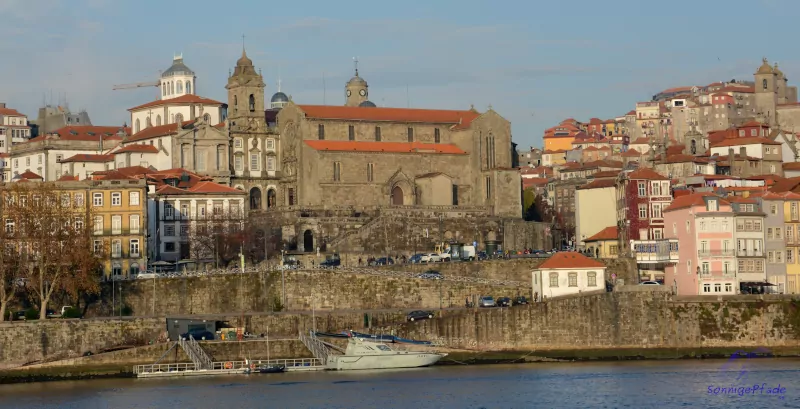
The Pilgrimage of St. James from Porto to Santiago de Compostela
As mentioned above, the Portuguese branch of the Pilgrimage of St. James to Santiago de Compostela in the spanish Basque Country begins in front of the Sé do Porto Cathedral. In the cathedral there is the grave of the apostle Jacob. From Porto, it’s 248 km, largely north along the Atlantic coast. Other stops in Portugal are Barcelos and Braga. From Barcelos, Portugal tells the story of a pilgrim peasant accused and convicted of theft. The miracle of a rooster jumping up from his judge’s plate saved the peasants life.
[Contains *advertising!]
Travel tips for Porto
Get your Portugal arrival tips here in the extra post!
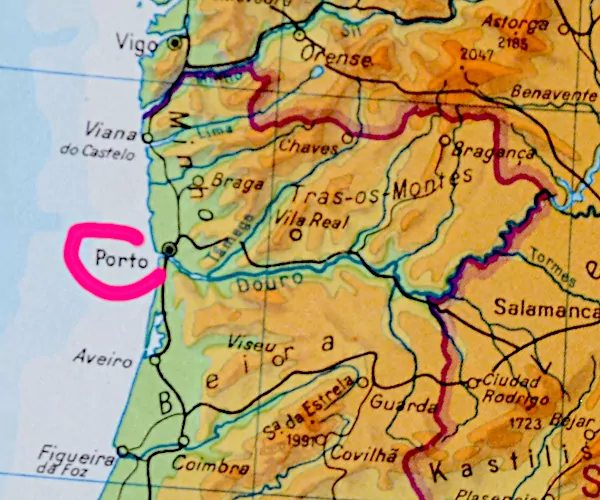
Getting to city of Porto in the north of Portugal
Porto has the second most important airport in Portugal (IATA code OPO) and is served from many places in Europe. The European low cost airline easyjet*, for example, flies e.g. from Swiss, France, UK and Luxembourg to Porto. From the airport, the metro is the fastest means of transportation to downtown Porto.
By public transport, Porto is easy to reach within Portugal. For example, the train makes it from Lisbon in 3 hours with the Portuguese InterCity variant. Porto Campanhã station is connected to the Portuguese high-speed rail network, on which tilting trains „Alfa Pendular“ operate.
I have been in Portugal mainly with the Rede Expressos long-distance buses on the road, which is comfortable and inexpensive and in such a relatively small country also quite fast. All larger, many smaller cities and many a highly frequented destination on the outskirts is served by this national long-distance bus company. The long-distance bus station is located in the Batalha district, close to the cathedral and the Sao Bento train station.
The long-distance bus connections can also be checked online via omio and booked directly*. As a rule, you can check in on the long-distance bus with an online ticket. Unfortunately, Portuguese Railways is not involved in the omio booking system.
Porto Local traffic
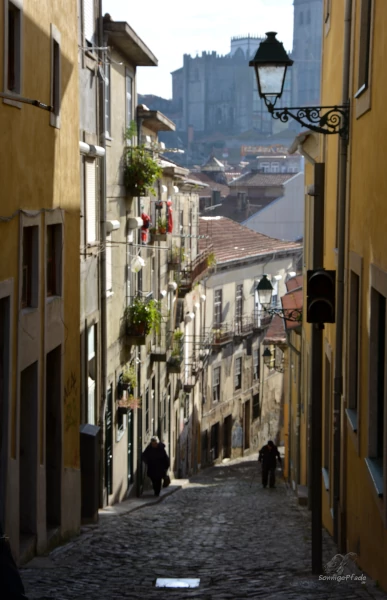
I admit – I was only on foot. With a little bit of verve, the whole city center of Porto is good to walk. Especially in Porto, comfortable shoes are important to enjoy the many interesting sights well. However, the differences in altitude can be a bit strenuous.
As described above – the main means of transportation in Porto are city buses. There are three streetcar – lines served by the historic cars from the forties, but this is more a tourist attraction of Porto. For more remote areas of the city, there is also a metro with several lines, which is still being expanded. And then, as already described – mountain railroads, a cable car in Via Nova, elevators…
There is a „Porto card“ for one and several days, which includes local transport tickets for the duration of validity and free admission to city museums. Other establishments and providers grant discounts, e.g. for a boat trip on the Rio Douro. The Porto card is available at tourist offices. At a quick glance, the offer seemed quite reasonable to me. But it always depends on what you want to do and if you want to see exactly the attractions in Porto that are included. Included is the metro from/to the airport as well as a regional train with „beach – connection“ in Espinho.
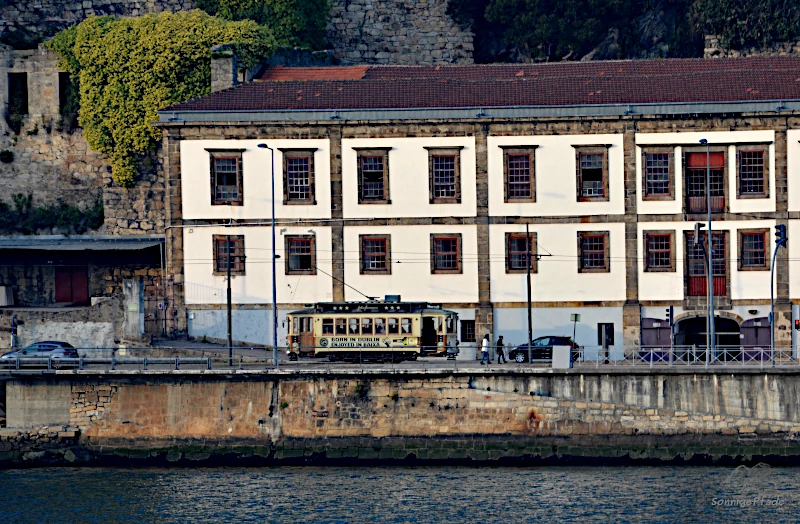
Porto current weather
In the adjacent graphic the current weather from Porto is reported. A little help for travelers in search of sunny weather…
Accommodation in Porto
Porto Hotel’s
Porto Domos Hotel* offers double and triple rooms or a suite. It is located close to the city center about 600m from Café Majestic and 800m from Rivoli Theater. The nearest metro station is just 300m away. Parking is available, but must be reserved and paid for.
Aparthotel Oporto Entreparedes* is a few minutes from Sao Bento train station. Studios and apartments for two to 6 guests are available here. The brightly colored rooms have parquet floors. Kitchen facilities and tea and coffee accessories are provided in the rooms. Rental bicycles are offered free of charge. São João National Theater is about 100 yards away, and Livraria Lello bookstore is 800 yards away.
Close to the train station, the Ibis Hotel Porto Centro Sao Bento* offers a range of double rooms. The hotel has disabled access, and disabled parking is also close by. There is an elevator for the upper floors. Breakfast and soft drinks are available to guests at the hotel café. It’s under a 900-meter walk to the Sé do Porto Cathedral, Livraria Lello bookstore or Dom Luis I Bridge. Pets are allowed at the Ibis Hotel Porto.
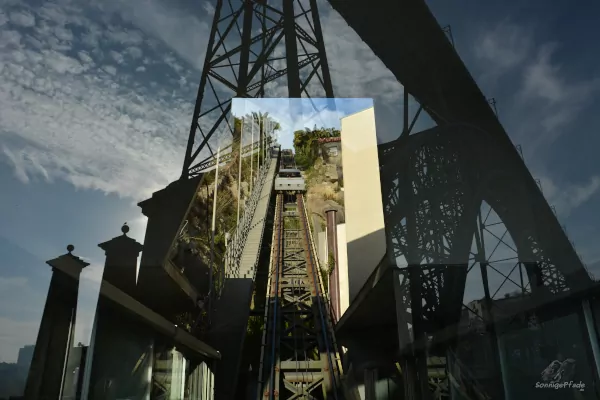
Not quite as close to the center but with good connections, the Métier Boutique Hotel Porto* awaits guests in two-bed rooms or the three-bed lifestyle suite. Coffee/tea facilities are provided in all rooms. All destinations can be reached quickly by public transport (especially the metro) – the „Porto card“ is recommended as a local transport ticket. The most important sights are about 1.8 km away on foot. With the rich breakfast of the hotel, this is certainly not a big effort. In the evening you can relax in the rooftop bar.
Apartments in Porto
Well-kept apartments for up to four guests can be booked at Trait House*. The kitchens are equipped with microwave, electric kettle, refrigerator and oven. The garden and terrace are open to all visitors. Café Majestic is about 600 meters away. It is 1.2km to Torre de Clerigos. Porto Sao Bento train station is reached after 900m.
Fabrica 55* offers studios and apartments for two or three guests at the address of the same name in Porto. The rooms have a kitchenette. Upper floors are accessible by elevator. Parking spaces, some of them handicapped accessible, are available. Top – attractions of Porto, such as Livraria Lello or the Torre de Clerigos are only about 200m away.
The Oporto Lux Apartments* are friendly two- and three-bed rooms with kitchenette and dining area close to the city center of Porto. The Rivoli Theater is about 400m away, the Rio Douro 900m and the Dom Luis I Bridge just over 1km.
Hostels – budget Accomodation in Porto
Being Porto Hostel* has beds in shared dormitories, also extra for women, and various private rooms from two to four beds and family rooms. These are partly with private bathrooms, partly with shared bathrooms. Lockers are available, and luggage storage is also available for arrival or departure days. The location is excellent – all destinations in the city center are within short walking distance.
Porto Republica Hostel* offers a range of private rooms for two, three or even whole families, with or without private bathrooms, as well as beds in shared dormitories. Breakfast is included. Trindade metro station is about a 5-minute walk away, and the Torre de Clerigos and Livraria Lello bookstore are around 10 min. It’s 700m to the Rivoli Theater. Garden and bar offer space for relaxation.

You like the story about Porto? Share it!
If you want to plan your Porto trip with your friends, share the link to the post in your social media channels! Thank you!
* Reference to advertising links
Some links are marked with * and connect to stores or online offers. If you click on such a link and buy something in the store, the sunny trails blog receive a small commission to finance this blog. Nothing will be more expensive for you, because the commission has already been taken into account in the pricing.
Source product images: Manufacturer/ Dealer

